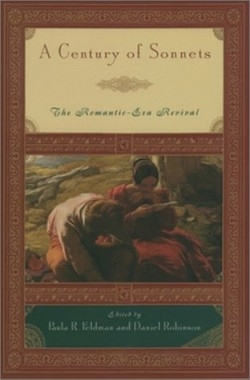A Century for Sonnets
The Romantic Era Revival
How do I love thee? Let me count the ways.
I love thee to the depth and breadth and height
My soul can reach when feeling out of sight
For the ends of Being and Ideal Grace.
This classic sonnet by Elizabeth Barrett Browning is the apex of a hundred years of sonnet writing—a revival during the Romantic Period (1750-1850)—and it is altogether fitting that it was written by a woman.
After Milton and Shakespeare, the sonnet form, with its fourteen-line structure and strict rhyme schemes, became unpopular in literary circles; disparaged as quaint. A hundred years later, sonnets experienced a resurgence, begun by women who were just beginning to publish professionally. Many women poets crafted sonnets in the manner of Petrarch and Milton as a way to prove their mettle, in hopes of advancing their careers as purveyors of the poetic arts.
A Century of Sonnets is a rich collection of 481 sonnets from this period, some never before published in this century. It offers well-known works by Wordsworth, Coleridge and Keats, but it is the women poets who shine, from the pure agony of Charlotte Smith to Mary Robinson’s classical sequence “Sappho and Phaon” to Mary Tighe’s lush imagery and Ann Radcliffe’s biting wit.
Prior to the Romantic period, the only relationship women had to sonnets were as the object of the desire of the male poet. Elizabeth Barrett Browning’s crowning Sonnets from the Portuguese embody a significant shift: it is she who is writing, and he who is the subject.
Footnotes would have been more helpful than endnotes, and a running header that showed the name of the poet whose work appears on each page would have facilitated sonnet sampling. The introduction is an excellent mini-course in sonnets and the history of sonneteering. A Century of Sonnets would complement any serious class on poetry or Romantic Period literature, especially if the study is to address more poets of the era instead of just the most famous men.
Reviewed by
Karen McCarthy
Disclosure: This article is not an endorsement, but a review. The publisher of this book provided free copies of the book to have their book reviewed by a professional reviewer. No fee was paid by the publisher for this review. Foreword Reviews only recommends books that we love. Foreword Magazine, Inc. is disclosing this in accordance with the Federal Trade Commission’s 16 CFR, Part 255.

